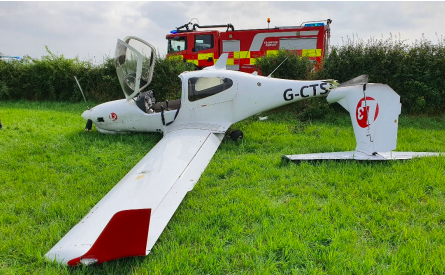Student Pilot Elects Go-Around, Unstable Approach, Cranfield Airport (What does a bad day look like?)

Runway overrun after student pilot attempted go-around, Cranfield Airport
A student pilot was planning to fly some solo visual circuits at Cranfield Airport, Bedfordshire, having recently completed her first solo. Runway 03 was in use and the weather was good with a wind from 030° at 6 kt. The aircraft completed the circuit without event until it was on the approach.
During the final approach at Cranfield, on the first circuit, the pilot realized the aircraft was too fast and high. Despite trying to correct the approach by selecting flaps to full, the pilot realized the approach was still unstable so elected to execute a go-around (GA). The flaps were retracted to take off, the aircraft was pitched up, and the pilot believed that full power was applied. However, it soon became apparent that the aircraft was not climbing as expected and the pilot felt there was not enough power.
During the Cranfield go-round, the aircraft descended as it flew along the runway. It subsequently struck the airport perimeter hedge and came to rest in an adjacent field. The pilot sustained minor injuries. The aircraft was damaged beyond economical repair.
Why did the go-around at Cranfield not sufficiently work?
It was discovered that the aircraft did not have the performance to climb during the go‑around as the engine power applied during the go-around was recorded to be about 13%.
Conclusion
The aircraft did not have enough performance to climb after a go-around was initiated by the pilot. The pilot was insistent that the throttle was advanced, but the recorded data from EFIS showed the power remained at 13%. The manufacturer considered that the engine and its control system were operating normally, and no cause could be established to explain why the power did not respond to the reported throttle movement. While the pilot lowered the nose to maintain an appropriate speed, the aircraft descended and eventually struck a hedge on the boundary of the airfield.
Read the full AAIB report here.
Source and image credit: AAIB (Air Accidents Investigation Branch), “DA 40 NG, G-CTSR.”



